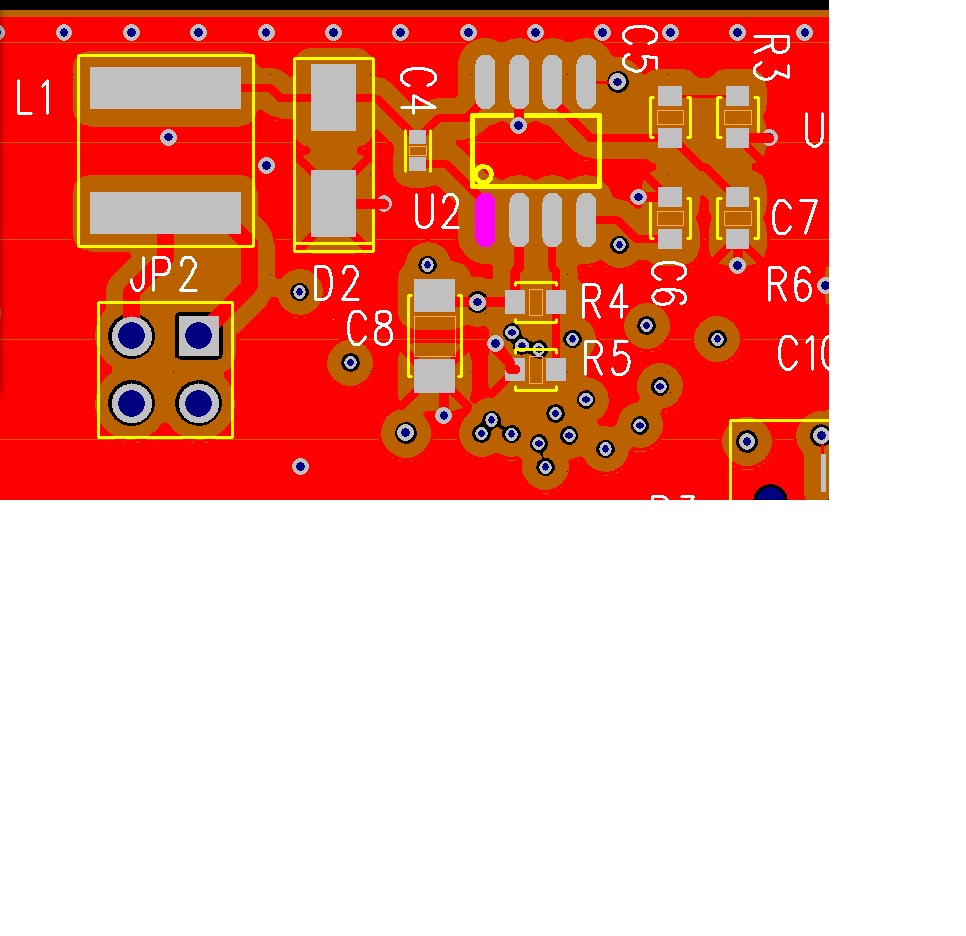I have designed a board with three TPS54331 parts. In the past I have successfully designed boards with similar TPS54232 supplies and have done several other boards with other switching supplies. One of the 3 supply circuits is working (3.7V output) but one two are not (1.8V & 1.2V). I made the mistake of driving these 2 supplies with 3.3V instead of the 3.5V minimum in the datasheet. I increased the 3.3V supply to 3.55V but these 2 still are not working while the one driven at 5V is working fine. I also tried replacing both TPS54331 parts and a few of the components around them but the circuits act the same. The output voltages don’t come up to the proper voltage (0.85V & 1.01V instead of 1.8V & 1.2V respectively). I even bought new parts from a different vendor and replaced again with no help. I'm using 4.5uH, 4A rated inductors for all 3 supplies.
I went back to the SwitcherPro software and re-entered the circuit for the 1.8V supply and saw that it was not very stable. I fixed some components and let it pick others until I had a very stable design. Then I swapped out components on the board to match and I see no change at all in the behavior. Instead of the desired 1.8V output I still see about 0.85V. I did the same redesign with the 1.2V circuit with no improvement. I tried arbitrarily changing output resistor values and got an increase in output voltage, but not near 1.8V.
I am testing with the non-working supplies unloaded. I don’t see any evidence of switching on any of the pins. I have reviewed the layout and don’t see any issues there. This is a 16-layer board with LOTS of ground. The working circuit is placed side-by-side with one of the non-working circuits and the layout is almost identical for both circuits. Is there a reason this part would not work with light or no load?
I built up a bare board with JUST the 1.2V & 1.8V supplies. I have varied the input voltage from 3.5 to 6V and cannot find any voltage at which both supplies work. I have been through the datasheet calculations and don't see any problems with my designs. I have to respin this board soon and need to make a decision to ditch this part and start over if I can't find a fix so prompt help would be sincerely appreciated.
Thanks,
Jim


